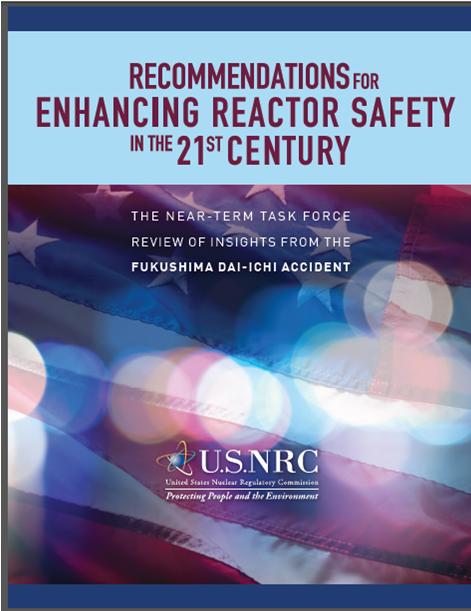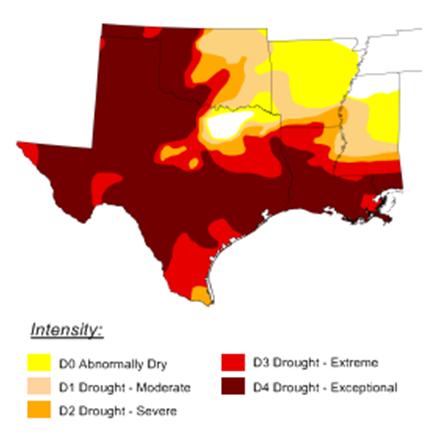The EPA under Perry . . . what would that look like? I don’t know about you, but that thought sends cold shivers down my spine, even on a 104 degree day.
The Austin American Statesman takes a look at what the EPA might become with a Perry White House. Public Citizen’s own “Smitty” weighs in:
Perry environmental stance would transform EPA
By Asher Price
AMERICAN-STATESMAN STAFF
As governor of Texas, Rick Perry has argued that the U.S. Environmental Protection Agency has strangled business and interfered with state environmental efforts, and he has championed a half-dozen lawsuits challenging federal air pollution and greenhouse gas regulations.
The dispute with the EPA serves as a proxy for larger Perry arguments about states’ rights versus federal power. It “illustrates how Washington’s command-and-control environmental bureaucracy is destroying federalism and individuals’ ability to make their own economic decisions,” Perry wrote in his book “Fed Up! ”
So, should he run for the White House and win, how would a President Perry treat the EPA?
From his rhetoric and record as governor, one might think that he’d be tempted to dissolve the agency. He has actively loosened regulations in the name of economic development and denied that scientific consensus exists on climate change, ascribing anxieties about greenhouse gases to a “secular carbon cult.”
But on the campaign trail, he is likely to tell a story about environmental accomplishment. He will point to improvements in air quality in the state’s major cities, and he will note that the state leads the nation in wind power. And he will say that Texas has done it by working with industry, not being its adversary.
“If the EPA thinks a sweeping mandate is required to spur the creation and adoption of alternative energy sources, they need to know the private sector is already making that happen here in Texas, helped by incentives from this state,” he said in a news conference after Obama’s victory in 2008 .
The state’s wind industry won its greatest boost from a 1999 mandate by the Legislature that Texas utilities buy a certain amount of power from renewable sources as part of a grand bargain to deregulate the state’s electricity market. In other words, wind power got a foothold because of just the sort of big government edict that Perry abhors.
To his credit, he encouraged a $5 billion ongoing plan to build transmission lines from West Texas and Panhandle wind farms to the state’s population centers, said Tom “Smitty” Smith, the head of the Austin office of Public Citizen, a government watchdog group. The lines will be paid for by utilities, which will pass costs on to ratepayers.
Perry also could repeat a claim about improvements to the state’s air quality. Between 2000 and 2010 , he noted in a news release last year and in a letter to President Obama, “the Texas clean air program (has) achieved a 22 percent reduction in ozone and a 46 percent decrease in (nitrogen oxide) emissions.”
PolitiFact Texas rated that statement as Half True: UT chemical engineering professor David Allen told the Statesman that it’s difficult to say quantitatively whether federal or state regulations were primarily responsible for the emission reductions. A quarter of the state’s nitrogen oxide pollution comes from industrial sources, which are mainly what the state regulates, but much of the rest comes from cars and other mobile sources, which the federal government regulates.
The point of Perry’s statement, in any case, was to say to the federal government, “Hands off; we can handle environmental issues ourselves.”
“It isn’t necessary to bludgeon job creators with hefty fines and penalties in order to make progress,” he writes in “Fed Up!” “It is better to work with business and harness American innovation — the same innovation that drives our economic success — in the realm of pollution control.”
One example: In the mid-1990s, Texas opted to issue so-called flexible permits that set facilitywide emission limits. The permits, strongly defended by Perry, set overall emission caps for facilities, rather than particular limits on emissions from a single boiler.
The flexible permit program “is like saying, ‘As long as you go 55 miles per hour, on average, in a month, you can go 100 or 125 some days,'” Neil Carman, air quality specialist at the Lone Star chapter of the Sierra Club, once told the American-Statesman . “It allows excessive kinds of pollution if you play that game.”
Federal regulators say the permits leave them in the dark about how many gases particular parts of a plant are belching into the air, and they are demanding an overhaul to the permitting program. The upshot has been hot rhetoric over the past two years between Perry and EPA officials. (The EPA now appears to have the upper hand, as some refiners, utilities and manufacturers have been working with federal authorities to revamp their permits.)
According to several measures tracked by the Environmental Defense Fund, Texas is the nation’s leading polluter. Its national rank among emitters of sulfur dioxide, which contributes to acid rain and smog, actually rose during Perry’s tenure from fifth in 2000 to third in 2009.
But the state’s pollution might be as much a reflection of the richness of Texas’ industrial base as a comment on environmental compliance.
Perry “approaches the issues from a very libertarian bent,” said Jim DiPeso , policy director of Republicans for Environmental Protection. “The EPA would be in for some significant budget reduction. There would be no new intiatives, no regulatory programs that would be initated. There’d be litigation from environmental groups that believe he’s not enforcing the Clean Air Act and Water Act as robustly as the law provides.”
“Any regulatory programs would be really throttled back,” he said. “He has shown no interest in climate policy at all. He doesn’t accept the science.”
With the governor’s blessing, Texas Attorney General Greg Abbott is challenging at least six EPA greenhouse gas-related regulations. The state’s underlying argument: The fundamental finding that greenhouse gases are a public health threat is scientifically flawed.
The federal government is pushing “hastily enacted, cascading regulations” on states and businesses, Abbott argued in a June brief filed on behalf of nine states in federal court.
Perry’s approach to energy, DiPeso said, “would be to produce more,” rather than discourage the development of energy projects, such as coal plants, that emit greenhouse gases associated with global warming.
“In terms of energy, (Perry) would pursue what many Republicans call the ‘all of the above’ strategy, with more energy development offshore and onshore,” DiPeso said.
Individuals and committees associated with energy, the extraction of natural resources and waste disposal contributed just short of $14 million to Perry’s campaigns between Jan. 1, 2001, and Dec. 31, 2010, according to Texans for Public Justice, a nonprofit that tracks money in politics. Overall, donors gave more than $102 million to his campaign during that period.
His top individual donor during that time was homebuilder Bob Perry, who contributed $2.5 million and has supported property rights efforts unsympathetic to endangered species protections. Ranking behind him was investor Harold Simmons, who owns Waste Control Specialists. In 2008, over the objections of environmental groups and its own staffers, the state environmental commission approved a license for Waste Control Specialists to build a dump near the New Mexico border for disposal of radioactive waste related to Cold War-era uranium processing. Three agency staffers quit in protest.
Broadly speaking, the Texas Commission on Environmental Quality has shown itself to be sympathetic to business interests. In several prominent cases, its commissioners, appointed by Perry, have ignored the recommendation by the agency’s public interest counsel to deny major air and waste disposal permits.
In requests for permission to build a coal plant about 100 miles northeast of Austin, to reopen a copper smelter in El Paso and to dispose of various kinds of waste at the West Texas radioactive waste landfill, the commission sided with recommendations by its executive director over those of the public interest counsel. By some empirical measures, its enforcement arm is weak. A 2009 Notre Dame Law Review article comparing 15 states found that Texas spent less on environmental programs than all but one on a per capita basis. And in the recent round of budget cuts, the commission suffered disproportionately high cuts of 30.2 percent.
Perry himself earned the ire of environmental groups for trying to fast-track the permitting of as many as 17 new coal-fired power plants in 2006. Most were never built.
An EPA under a President Perry “would be more effective, accountable, pragmatic and realistic,” said Kathleen Hartnett White , a former environmental commission chairwoman and a Perry appointee to the board of the Lower Colorado River Authority. She also is a fellow at the Texas Public Policy Foundation, a small-government think tank.
Under Perry, the commission “operated under the rule of law and has not stretched it or contracted it,” she said.
“The current EPA really stretches the limits of law in which they operated,” she said. “They need to be more accountable to Congress and to the states. Needless to say, the governor would give more respect for state authority.”
Perry also would have “higher standards for science,” she said, echoing arguments that the attorney general has made in disputing the EPA’s finding that carbon dioxide emissions endanger public health.
Despite those claims, there is consensus among scientists that humans contribute to climate change. An international climate change panel of more than 2,000 scientists came to just that conclusion in 2007.
“Climate change is occurring, is very likely caused by human activities, and poses significant risks for a broad range of human and natural systems,” concluded a May report of the National Research Council, which is charged with advising Congress on health and science policy. “Each additional ton of greenhouse gases emitted commits us to further change and greater risks.”
The best guide to a Perry EPA might be an early Bush EPA, which was concerned with energy development.
Among other things, the Bush administration downplayed and edited work by EPA scientists warning about climate change and sought to loosen rules about putting power plants near national parks.
But upon Bush’s departure from office, Richard Greene , then the head of EPA’s regional office in Dallas, told the Statesman, “A claim can rightfully be made by the Bush EPA that air is cleaner, water is purer, and land is better protected than it has been in three generations.”
Environmentalists would beg to differ. But a Perry administration could be even worse for environmentalists’ interests, Smith said.
He said Perry criticizes EPA initiatives that had roots — if weak ones — in the Bush administration, such as more stringent smog standards, and tougher rules on power plant emissions.
A Perry EPA, Smith said, “would pander to the polluters.”




